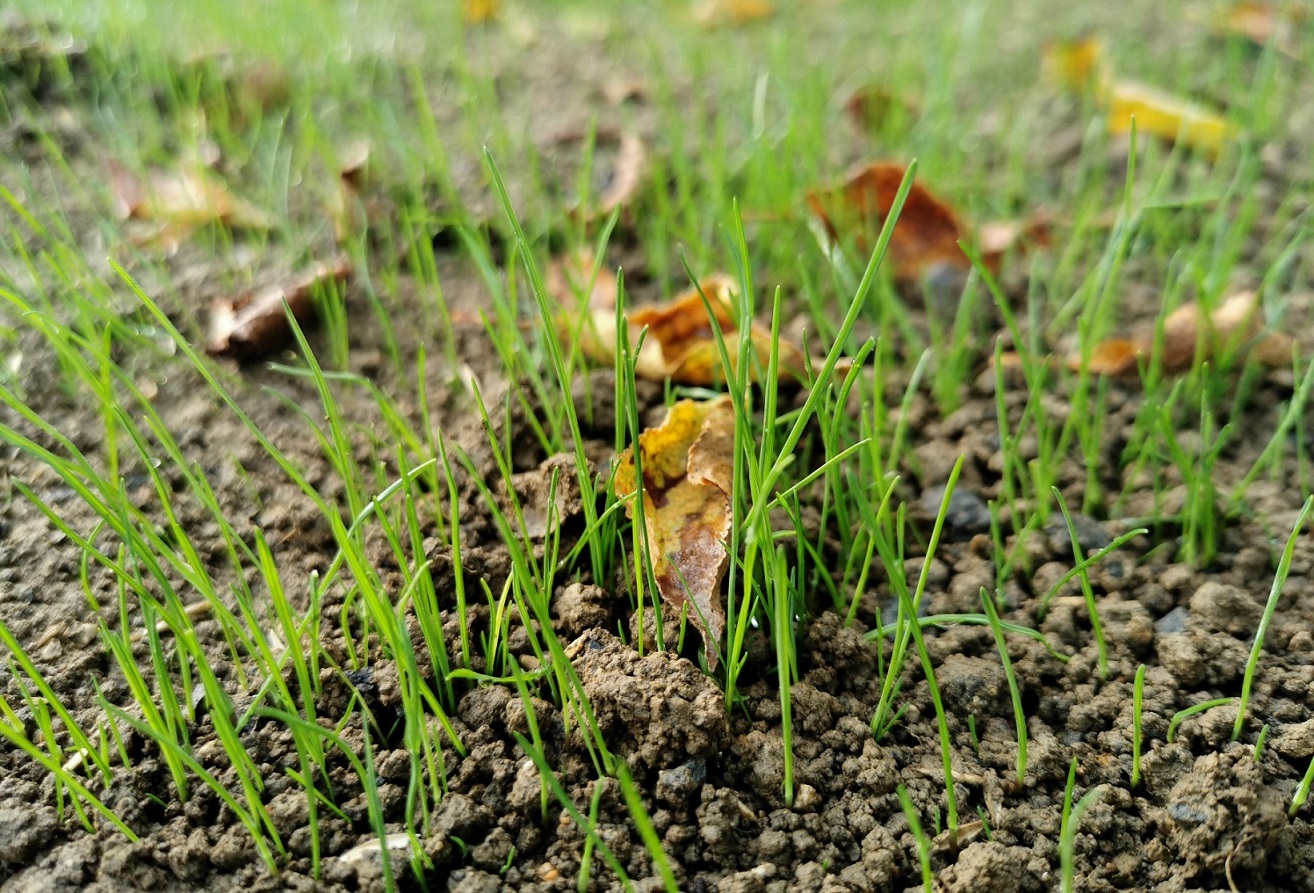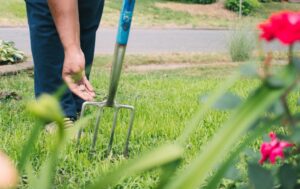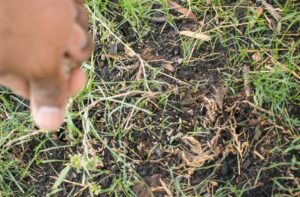The winter in Georgia is usually manageable and mild, thus, grass seeds, which are relatively resistant to low temperatures, can survive the winter. However, young grass seedlings will certainly not survive the frost and will die within a few days of a continuous frost. This is because the young, fragile plants formed from newly germinated grass seed are highly susceptible to very low temperatures.
Once you spread your grass seed in November or December, the seed lies dormant in the soil until spring. And when the air temperatures rise and the soil begins to heat up, the seeds are ready to sprout. Putting down grass seed at wintertime (which is referred to as dormant seeding) might be risky, but it saves time in spring as no seeding will be required. However, remember that in the case where there is the occurrence of a frost immediately after seeding, the seed will not sprout.
What Happens To Young Grass In Winter?
Some factors stimulate the growth of grass just like any other plant. These factors include sunlight, moisture, as well as air and soil temperature. During the winter, the air temperatures go down, decreasing the soil temperature, which results in the slow growth of the young grass.
Typically, it is too cold for grass seed to germinate when the soil temperature is below 50°F. For young grass to grow, the soil temperature must be at least 50°F. Even worse, if there is frost or danger of frost, then it’s definitely too cold. Once the temperatures get very low in wintertime, the young grass becomes dormant until the temperatures rise again in spring.
To determine the current temperature of the soil in your area, you can use this helpful, and free, soil temperature tool here.
How To Protect Grass Seedlings In Winter?
Young grass seedlings are susceptible to cold weather since they don’t have developed roots. Therefore, some frost that forms a layer on the ground will prevent the young grass from getting nutrients such as minerals and water from the soil.
In the long run, the new grass will go through a process of drying and moisture loss, known as desiccation, and eventually die off if not properly taken care of.
However, you can keep the grass seedlings alive by following these simple guidelines:
- Cover the grass seedlings
Covering the grass seedlings should be done only at night since the grass needs fresh air and sunlight during the day. You can cover them using either a bedsheet, cloth, plastic tarp, or peat moss to insulate the grass. This prevents harming the young grass as it helps retain the heat and warm air close to the ground to keep frost away.
- Avoid walking on the lawn
The grass seedlings need protection from foot traffic, thus, it is paramount to ensure that no people or pets walk on your lawn. Walking across young frosted grass can seriously damage or even kill it, as the pressure of the frozen water molecules on the frosted grass will lead to tearing through the plant cell walls. So, to avoid destroying the grass, make sure you use sidewalks and don’t drive across the frosted young grass.
- Water the grass
To protect the young grass, the night or late evening is the best time to water it as this helps prevent the ground from freezing overnight. The water collected in the soil retains heat, making it more difficult for the soil to freeze completely. By spraying warm tap water over the grass seedlings, you are protecting the new grass from frost since the warm water can prevent frost from forming.
- Fertilize the lawn in time
It is crucial to fertilize your lawn in the fall. In the morning, the fertilizer mixes up with the dewdrops, which boosts the soil, leading to the fast growth of the grass before the winter season. The fertilizer contains a lot of nutrients that enable the grass to withstand low temperatures during winter.
Will New Grass Freeze And Die?
Grass seeds can handle frost very well and they will usually not get destroyed or killed by frost. But the new, young grass is very vulnerable to low temperatures and will certainly die if it freezes. This is because the freshly germinated grass seed produces tender grass seedlings which are highly predisposed to freezing. After exposure to frost for several days, any seedlings that have already sprouted will die. If the air temperature doesn’t rise within a few days after the frost has started, the not-sprouted grass seed will remain dormant throughout the winter.
Thus, it is recommended to avoid planting the seed when you know that frost could occur in the near future. Seeding your lawn no more than six weeks before any expected frost will give the seedlings a chance to develop the proper roots they will need in order to survive the cold weather.
Also, it is vital to know the various type of grass that you can plant during a particular season because different types of grass can withstand the different types of climate without giving you a hard time.
What Temperature Will Kill New Grass? Will Frost Kill It?
Extreme temperatures kill new grass. Air temperature below 50°F and above 90°F will kill the new grass. These temperatures make the seed return to dormancy and stop growing.
Frost can kill grass seed but not on all occasions since the grass seed can withstand varying temperatures. Once the soil freezes, this will lead to a low supply of water and nutrients to the grass roots. Thus, the younger grass roots cannot consume water, leading to dehydration; hence the new grass dies.
Sometimes, inconsistent soil temperatures cause the grass seed to undergo cycles of freezing and thawing, and due to the moisture collected around the seed, it rots away.
If you need help taking care of your lawn, a reliable lawn care service is just a click away. Contact us today for a FREE estimate and find out why residents in the Metro Atlanta area choose Guaranteed Green! You can have healthy, green, and weed-free grass in your yard with our all-inclusive, custom weed control and fertilizer lawn care program.





